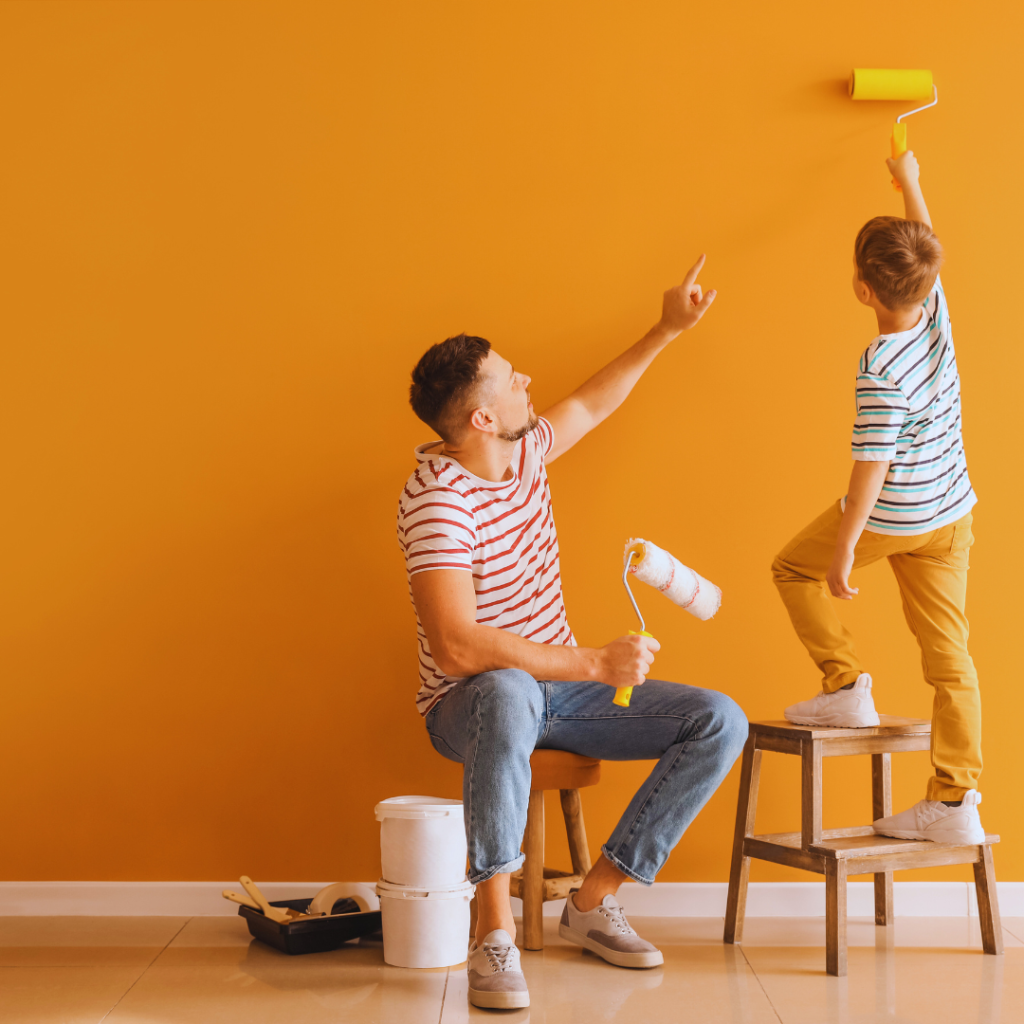Painting a feature wall can transform a room’s appearance and aesthetic appeal. Choosing the right color and technique is essential to creating a striking focal point that enhances the overall design. With the right preparation and method, anyone can achieve a professional-looking finish.
Before starting, it is important to select a color that complements the existing decor and determines the wall’s purpose. Whether opting for a bold shade or a subtle hue, the choice should reflect personal style while harmonizing with surrounding elements.
Proper planning and execution are key to a successful project. This includes gathering necessary tools, prepping the wall, and applying the paint with precision. With a bit of patience and attention to detail, achieving a beautifully painted feature wall is well within reach.
Planning Your Feature Wall
Effective planning is essential for a successful feature wall. Attention to the right wall and careful selection of paint color will enhance the desired focal point in any space.
Selecting the Right Wall
Identifying the most suitable wall is crucial. Look for a wall that naturally draws attention or has architectural elements that can enhance the design. The wall should not be cluttered with furniture or decor, allowing it to stand out clearly.
A feature wall works best in areas like small spaces, where it adds depth. Consider walls across from doorways or windows that can frame the view. If creating an accent wall, select a wall opposite a major focal point, such as a fireplace or artwork.
Choosing Your Paint Color and Finish
Choosing the right color can transform a room. For a bold impact, consider vibrant hues like deep blues or rich greens. These colors draw the eye and can serve as a powerful focal point.
Alternatively, pale neutrals provide a chic, subtle background that complements the surrounding decor. Combining contrast is effective; pairing darker shades with lighter tones can create striking visual effects.
The finish also affects the wall’s appearance. Matte finishes can provide a sophisticated look, while satin or semi-gloss finishes can reflect light and enhance the room’s dimensions. Ultimately, the chosen color and finish should enhance the overall style and ambiance.
Designing the Feature Wall
A well-designed feature wall enhances the overall aesthetic of a room. Key elements include incorporating texture and patterns or creating an engaging mural or gallery wall.
Incorporating Texture and Patterns
Adding texture to a feature wall can transform a plain surface into an architectural feature. Various materials like wood panels, stone cladding, or textured paint can create depth.
Patterns can also be effective. Consider using wallpaper with a geometric design or stripes that add interest. Opting for colors that contrast with the surrounding walls can further emphasize the feature wall.
Another approach is to use stenciling or decals. These allow for creative flexibility without committing to permanent changes.
Combining textures and patterns thoughtfully can create a cohesive look that complements the rest of the room.
Adding Murals and Gallery Walls
Murals provide an opportunity to express creativity through large-scale artwork on feature walls. They can range from abstract designs to realistic landscapes, depending on the desired effect.
A gallery wall is another option, showcasing a collection of framed art pieces or personal photos. This layout fosters a unique visual narrative.
For best results, it’s important to arrange the items thoughtfully. Use various frame sizes and styles to create visual interest.
Select a color palette that aligns with the room’s overall design to maintain cohesiveness. Both options promote personalization and can easily adapt to changing tastes.
Execution and Technique
Executing a feature wall requires careful preparation, technique, and attention to detail. Properly preparing the wall and employing effective painting techniques will ensure a professional finish.
Preparing the Wall for Painting
Preparation is crucial for a successful feature wall. First, the wall surface must be clean, dry, and free from dust, grease, or old paint. Wash the wall with soapy water and let it dry completely.
Next, repair any imperfections using spackle or filler. Ensure the surface is smooth by sanding it down once dry. Using masking tape, carefully tape off adjacent areas, such as trim, windows, and other walls, to create clean lines.
Lastly, apply a primer if the wall has a drastic color change or if it is unpainted drywall. This enhances the paint’s adhesion and durability.
Painting Techniques for Feature Walls
When painting the feature wall, choose high-quality paint that suits the desired finish. Using a paintbrush for corners and edges allows for precision, while a roller covers larger areas efficiently.
For unique designs like stripes or shapes, it is advisable to use a level and pencil to sketch outlines on the wall. After masking the areas, apply paint carefully within the lines. Using two coats may be necessary for a vibrant look; allow the first coat to dry before applying the second.
Opt for a technique that suits the visual effect. Sponging, stippling, or using a textured roller can add dimensions that elevate the feature wall’s appeal.
Finishing Touches and Clean-Up
Once the painting is complete, remove the masking tape carefully while the paint is slightly wet to ensure sharp lines. Touch up any areas that need correction with a small paintbrush.
Allow the paint to cure completely, following the manufacturer’s instructions for drying times. Clean brushes and rollers with soap and water or as specified by the paint product.
Dispose of any waste materials properly. Keeping the area tidy will enhance the room’s aesthetic and maintain the quality of the painted feature wall.
Special Considerations
When creating a feature wall, certain factors should be taken into account. This includes how to adapt designs for kids’ rooms and nurseries, as well as the need for maintenance and updates over time.
Feature Walls in Kid’s Rooms and Nurseries
Designing a feature wall for a kid’s room or nursery requires careful thought. Elements such as color, theme, and durability play crucial roles. Bright colors and playful patterns can stimulate creativity, while soothing colors may promote relaxation.
Safety is paramount. Use non-toxic, washable paints to ensure a safe environment. Additionally, consider using decals or removable wallpapers, which allow for easy updates without extensive labor.
In terms of placement, feature walls should be visible from key areas, such as the crib or play space. This makes the wall a focal point that enhances the overall interior design.
Maintaining and Updating Your Feature Wall
Maintaining a feature wall ensures it remains attractive and functional over time. Regular cleaning is crucial; materials like washable paint can simplify this process.
Inspect the wall periodically for signs of wear or damage. Small scratches or stains can be easily touched up with leftover paint.
For updates, consider changing decor elements that complement the feature wall. Accessories like wall art or shelving can refresh the space without requiring a complete overhaul. This approach allows for seasonal changes and keeps the space engaging for children.

